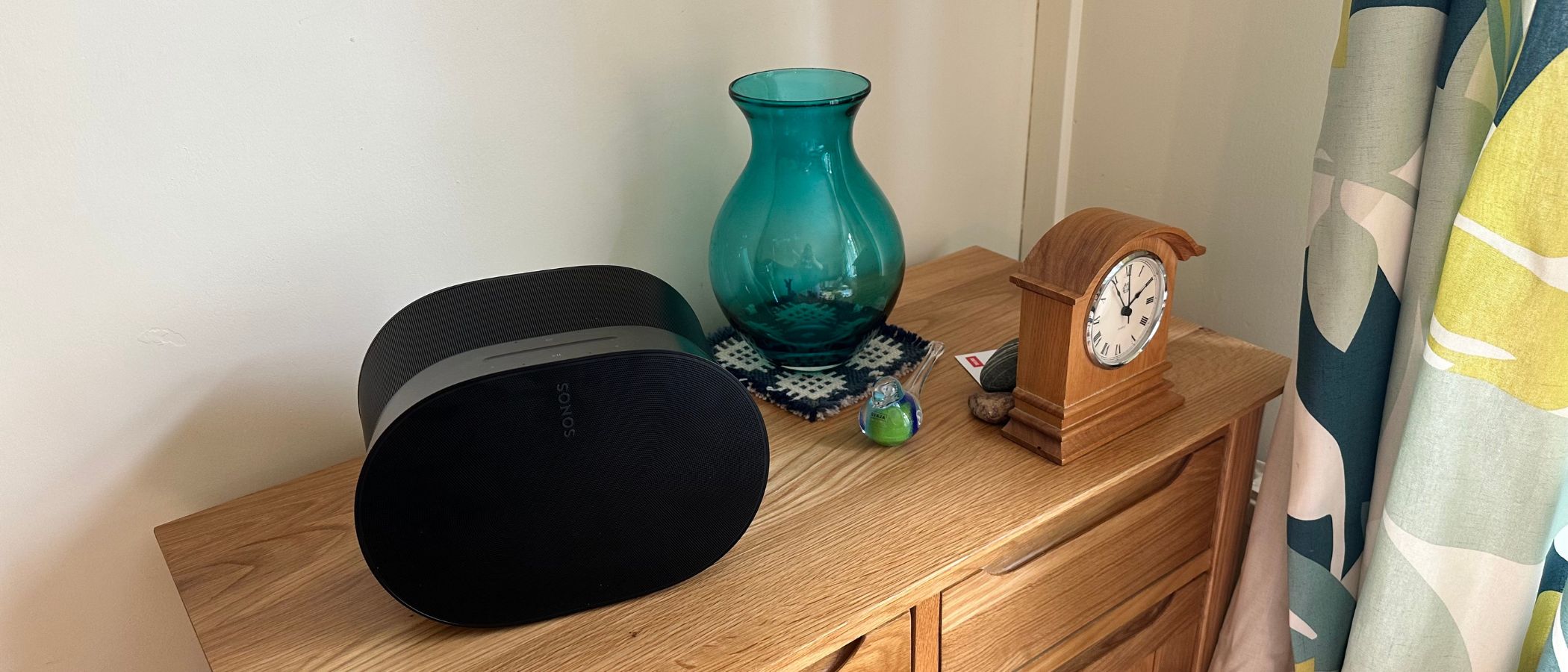iMore Verdict
The Sonos Era 300 is, without question, one of the best smart speakers that money can buy. It commands a higher price than the likes of the HomePod 2 but boasts more features and a much richer, more mature sound signature. All while looking like a little music-playing sculpture.
Pros
- +
It looks brilliant
- +
Very rich, pleasing sound
- +
Impressive Spatial audio playback
Cons
- -
Expensive
- -
That rich sound might be a little too rich for some
- -
App isn’t spectacular
You can always trust iMore.
At this point, Smart speakers are a dime a dozen. Everyone makes one, like the Apple HomePod, Bose’s creatively named Smart Speaker, and many, many more. Alas, all these speakers tend to look the same, sporting a similar tube-shaped design that sits on a shelf, bookcase, or desk and looks like a beercan covered with sonically transparent mesh.
The new Sonos Era 100 looks just like those other options, but thankfully, its bigger and more interesting stable mate looks quite different. From its sleek curves and weird, almost fallen-over hourglass-looking shape, the Sonos Era 300 instantly seems like it has been designed to be more than just a speaker that sits on the shelf. It’s a centerpiece, a piece of design to be admired rather than be tucked away with some books, only present to make music.
There is more to a speaker than its looks, however, and the Sonos looks to shake things up with some very, very nice extra features. I was assured by a Sonos engineer, in fact, that it would cure me of my distaste for Spatial Audio, through goodness only knows how many different bits of sonic wizardry. Was he right, though? Am I converted, and does the Sonos Era 300 stand as the new standard for Spatial Audio?

Tammy has been using HiFi gear for years, leading iMore’s audio coverage. She’s tested some of the latest headphones from Bang & Olufsen and experienced all the highs and lows of testing and sending back some of the most expensive headphones money can buy. Putting her fine ear for detail and her love of loads of different styles of music to use, she reviews all the newest audio gear so that you can see if it's worth buying.
Sonos Era 300: Price and availability
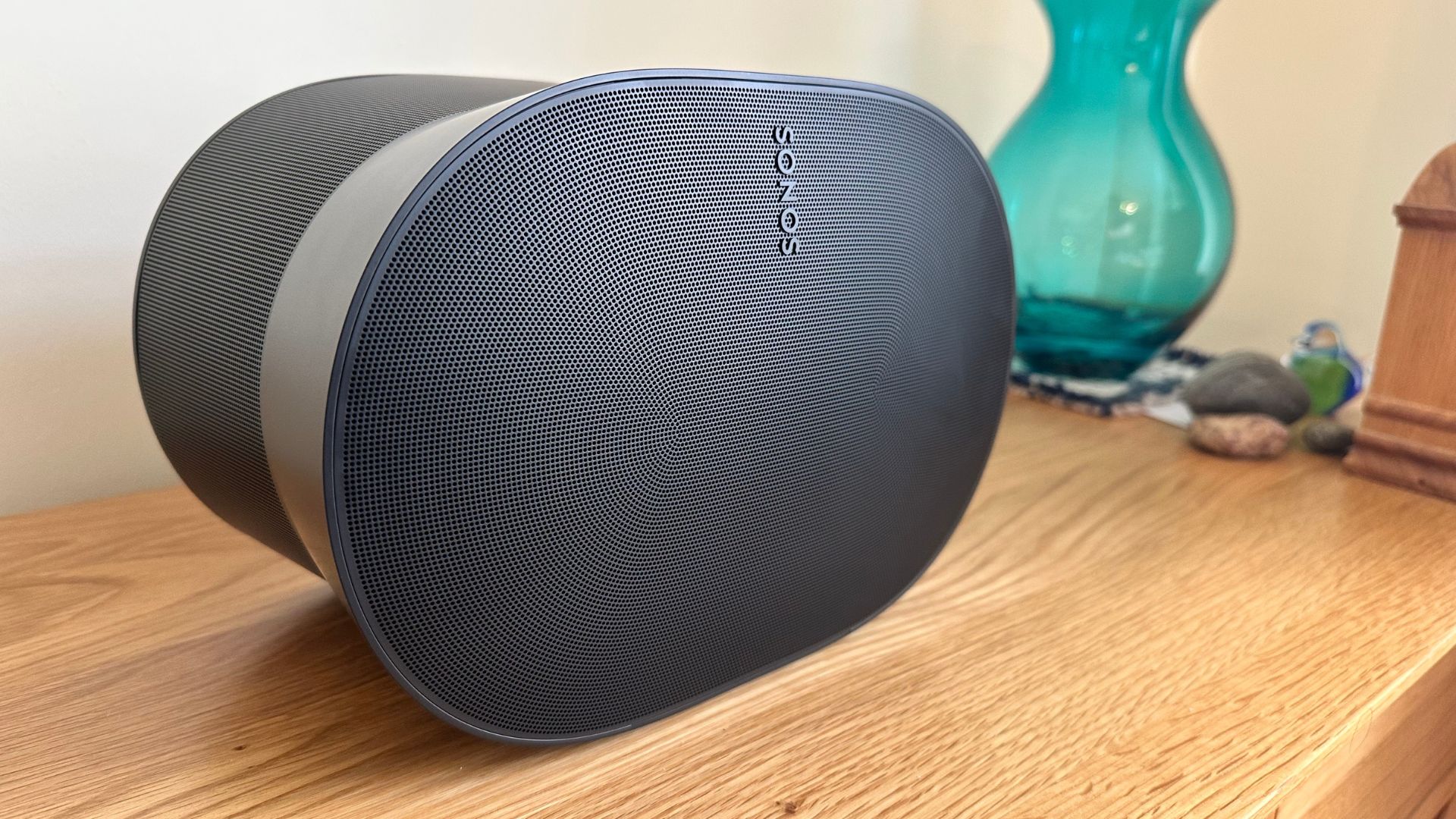
The Sonos Era 300 is not a cheap smart speaker. You can get one in white or black for $449/£449 which, for those with a keen eye and a good memory, is about $150 more than the HomePod 2. For the money, you are absolutely getting a better, more rounded product, but it’s a tall ask.
In terms of where you’ll find one, they are available almost everywhere. You can go straight to Sonos and get one from the Sonos website, or you can hop over to Amazon and grab one from there.
Sonos Era 300: What I liked
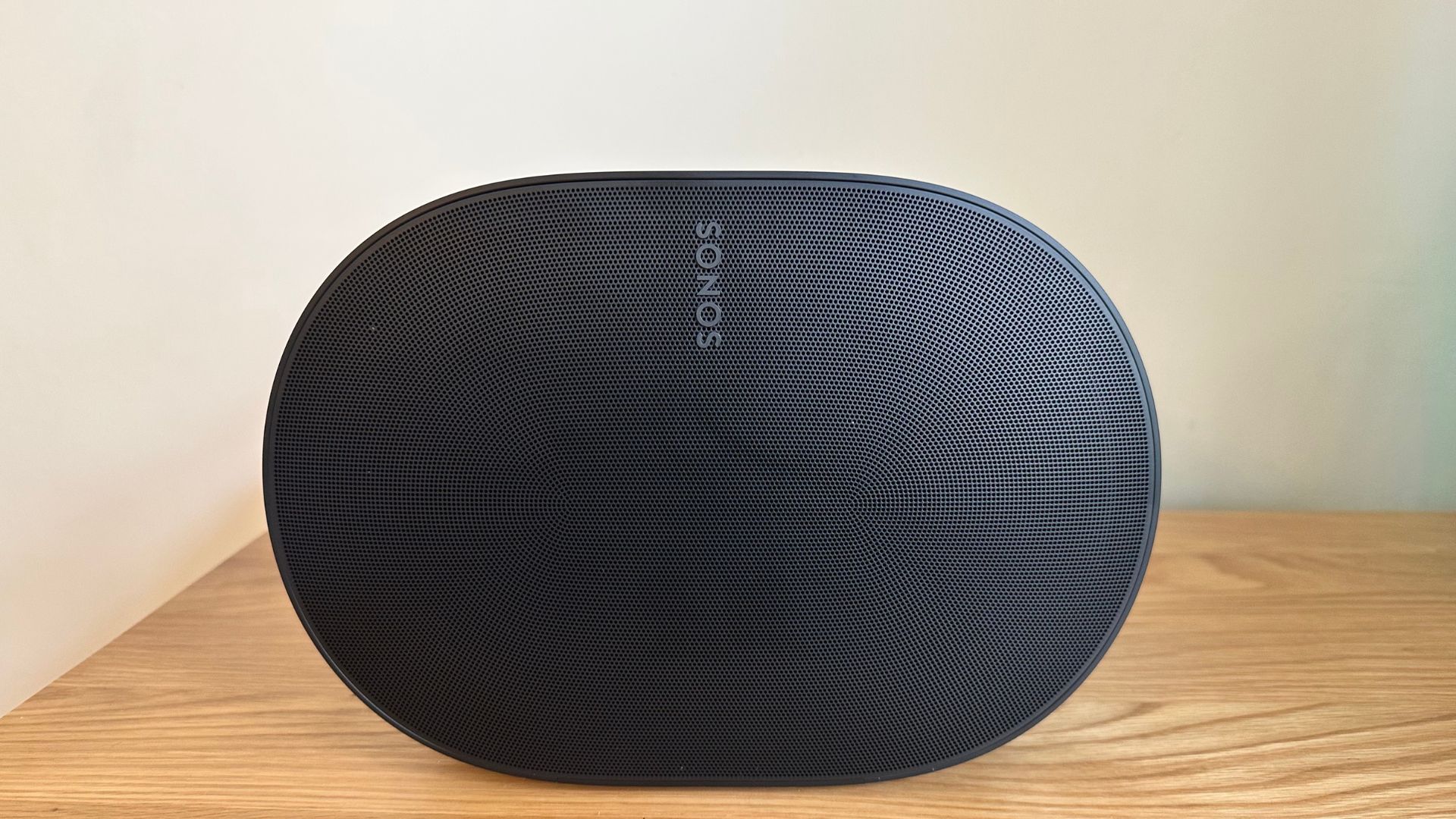
Out of its very complicated, slightly over-engineered but otherwise super satisfying box, the Sonos Era 300 immediately impresses with some stellar build quality and fab looks. It’s got a kind of modern art piece vibe to it, with its more organic shape and curves. I really, really like the way that it looks, and I can see it having a place on my shelf for some time to come, beyond it being a smart speaker.
Setting it up was super easy as well. I plugged it into the wall, opened up the Sonos app, created my account, added a few of my streaming services of choice, and got started. The speaker needed a quick update, but then it was pretty much good to go – apart from one new vital step that the speaker told me I need to take.
iMore offers spot-on advice and guidance from our team of experts, with decades of Apple device experience to lean on. Learn more with iMore!
There’s a feature onboard called Trueplay, which does some very clever sound and room modeling to make sure that the sound you’re going to get is the best it can possibly be for the space that it’s in. It prompted me to choose between two options – a quick one, and a more detailed one that would take a little longer. I tested both. The first one does a very quick pan around with some loud rumbling and sci-fi laser-gun noises that your phone picks up so that it can get a rough idea of what your room looks like. It worked well, and the speaker sounded very good.
I had to hold my iPhone 14 Pro upside down, so that the mics were facing out, and wander around the room, waving my iPhone around like a madwoman.
Once I had the speaker in its forever home, I finalized the process with the more detailed ‘Advanced Tuning’ Trueplay measure. For this, I had to hold my iPhone 14 Pro upside down, so that the mics were facing out, and wander around the room, waving my iPhone around like a madwoman. The same rumblings and laser gun pew-pews were played, and for 45 seconds my speaker measured my room and decided how best to distribute the sound according to the shape of the space it was within.
After a quick confirmation that it's all set up and a chance to let my arm take a rest, we can finally get to the bread and butter of the matter – some music. There are a number of input options to get started. There are the streaming services that I added, which can now be browsed in the Sonos App, letting you choose music from your library and search through them all together. There’s also AirPlay 2 on board so that you can send audio from loads of different apps over, like YouTube, along with a physical USB-C port so that you can hook up a device over a line-in connection. Last, and by no means least, is a little button (it really is tiny) that you can press and hold to connect a device over Bluetooth, adding two useful connection methods over the HomePod 2.
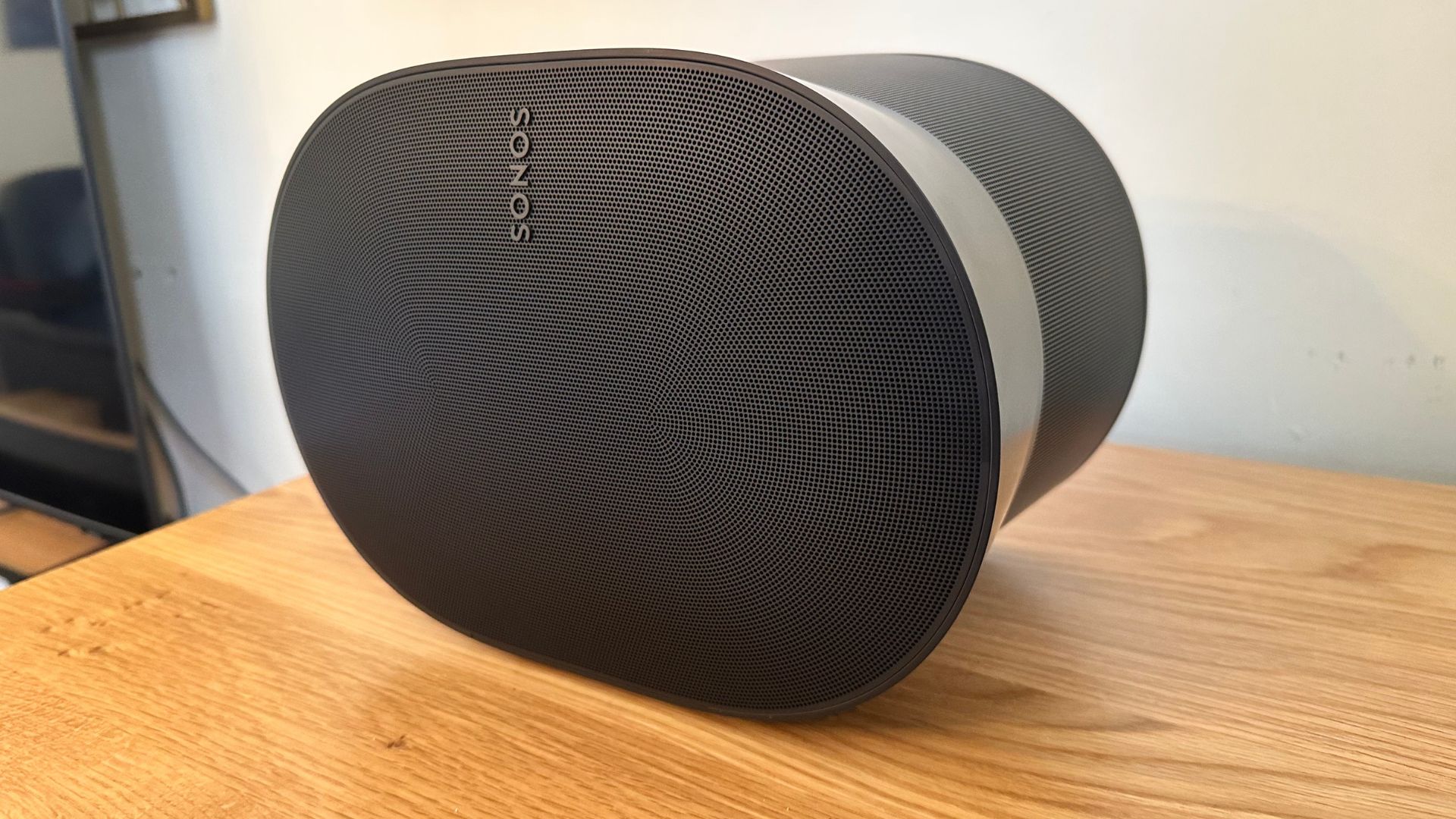
I elected to use the app to start with so that I could get a good idea of how the speaker sounded with my favorite tracks. I’d already got a taste of some of the sound when it was rumbling and pew-pewing at me, but I was unprepared for what the speaker was about to spit out at me. I expected something a little richer than most of my gear, but I wasn’t expecting it to be as tight, controlled, and detailed as it was.
I avoided Spatial Audio at first, just to make sure I could get an uncolored idea of what the speaker sounded like. Playing Pink Floyds Comfortably Numb showed me everything I need to know within a couple of seconds of Water’s vocal line. There’s a clarity to the top end to go with the expanded lower register that wows and punches above its weight class, the relative small size of the speaker somehow pumping out some varied and dynamic performances. Gilmour's guitar soars above, crashing in a great crescendo through the solo and into the bridge. Eyes and mouth aghast, I moved on to something else.
Gilmour's guitar soars above, crashing in a great crescendo through the solo and into the bridge.
Handels Messiah, Part 1 next for some classical music to really test the Era’s mettle. Tested it may have been, but it didn’t break a sweat. The strings are punchy, with plenty of mid-range grunt to give them depth and weight. The highs continue to impress with detail and clarity, the violin flourishing with aplomb. No.2 starts up, and the vocal line cuts in above the orchestra, the Tenor perfectly replicated in stunning detail. The performance of the Era is astounding the whole way through, with great soundstage and sonic imaging. It’s a great experience.
Finally, the last track played without Spatial Audio was something a little heavier. Akercocke’s Leviathon may not have been recorded with high-quality sound, but it's a great test of the boominess of the bass within a speaker. No such boominess here, with tight and well-formed bass throughout. The kick drum has perfect impact, and the distorted guitars are expertly formed with depth and crunch in spades. The Era 300, so far has had little to no problem with almost everything that I’ve thrown at it, in fact, and the usually very tricky lo-fi black metal is every bit as atmospheric, scary, and unapproachable as it should be.
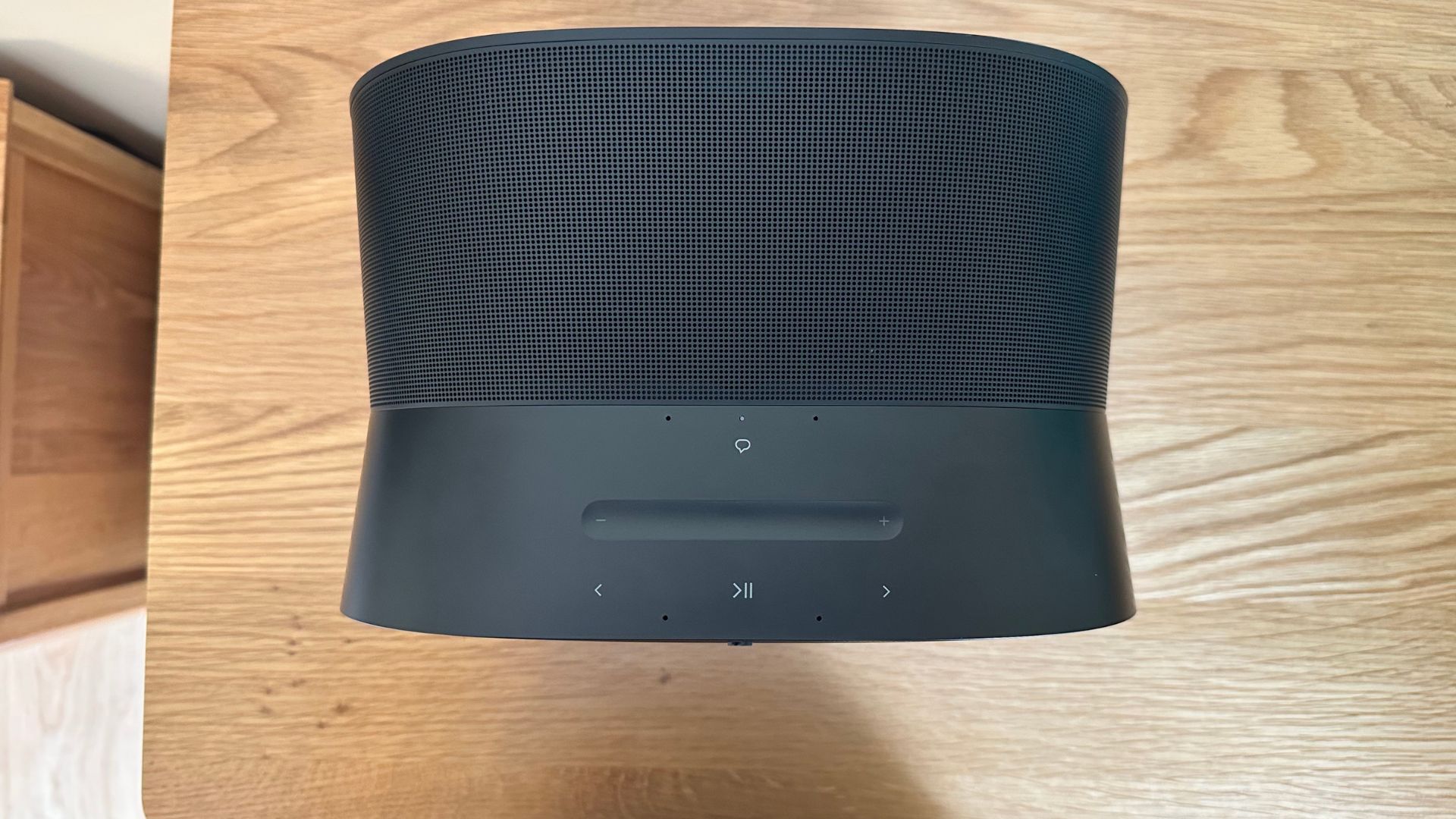
Spatial Audio, however, has long been a bugbear of mine. I’ve never been a big fan of the way that it sounds, as I’ve long felt it thins out the track and the mix unnecessarily so that it can create the illusion of surround sound without actually being all around you. I’ve, personally, always preferred the more ‘holographic’ effect that one gets from a decent pair of well-oriented stereo speakers connected to a high-quality signal rather than the over-processed monstrosity that streaming services have been pumping out for the last few years, in the hopes that eventually, you’ll only need one speaker in a room.
Well, it looks like Sonos has cracked it.
The Era 300 presents some excellent Spatial Audio, making the sound feel like it's coming from all around you, without cutting out the lower mids and bass. I am impressed.
I tried it out with some pop music – Rina Sawayama’s Hold the Girl. The opening bar of the track has a motorcycle fly past, revving as it goes – and the Era 300 makes for a convincing flyby. The bass line jumps around the room, and the strange, otherworldly vocalizations feel like they’re coming from around you. I enjoy it, as much as it hurts to admit; not to the point that this is how I want to listen to all my music, but enough that I will likely dabble from time to time. It’s good.
Not to the point that this is how I want to listen to all my music, but enough that I will likely dabble from time to time. It’s good.
Beyond the sound quality, there are some great extra features on board. You can set an alarm, and use any of the tracks from your streaming platforms to wake you up. You can control the speaker through a range of voice assistants, like the solid Sonos assistant, Alexa, or Siri through the medium of another HomePod nearby. That’s not perfect for Apple users, but it works well enough. Don’t want the mics listening to your every word? Turn them off with the hardware mic switch on the back.
Controlling the Era’s volume, skipping and pausing tracks, and getting activating the voice assistant can all be done vocally, obviously, but there are also comprehensive controls on the top surface of the device. There’s a long, inlaid volume slider, a pause, and skip backward and forwards buttons to go with a voice button.
AirPlay 2 works well, although it won’t support Spatial Audio, unfortunately – in my case, that means I won’t be able to listen to Apple Music Classical Atmos library, instead using the standard Apple Music versions through the Sonos app.
Sonos Era 300: What I didn’t like

That’s where my only real problem with the speaker is – its reliance on the less-than-stellar Sonos app. In terms of setting the speaker up, getting things working, and changing settings, it's not that bad. It’s well set up, fast to react under the finger, and nice to look at. The problem arises when you want to browse around the app and find the music you want to listen to, especially if it's Spatial Audio you’re after.
See, you can only (as far as I’ve been able to test, anyway) access Spatial Audio tracks from the Sonos app, in the library section. The only way you’ll know its Spatial Audio is once you’re playing it, and you can hear it and see the little ‘Dolby Atmos’ logo on the now-playing screen. Browsing the library is a chore. There is a search function that searches through all your services together, but it can be tricky to find exactly what you’re looking for, and the discover pages in the respective service libraries are useless at best. You’ll find what you’re looking for eventually, but it's annoying enough to not want to use it. Thankfully, if you’re not looking for Spatial Audio, you’ll be fine – just use your streaming app of choice, and get the music on the Era through AirPlay.
Thankfully, if you’re not looking for Spatial Audio, you’ll be fine – just use your streaming app of choice, and get the music on the Era through AirPlay.
Some also might find the sound a little too warm – it’s anything but analytical. There is an emphasis on the lower register here, and while it makes the speaker a lot more fun, it may annoy some who want something more restrained. I love it – it’s done so much better than the bass response on the HomePod 2, but it remains to be said that there’s a lot of bass here.
Finally, we have to talk about that price. It is more than the HomePod 2, but it sounds far better and (I think) looks more interesting too. That doesn’t stop $450 from being a lot of money, but in my eyes, it's well worth the price. It’s not even the most expensive smart speaker out there, or the most expensive Sonos speaker that you can buy. If you want to buy two for the ultimate Sonos audio experience, however, you’ll end up paying $100 shy of a grand, which really is a lot of money. It won’t stop you from wanting to try out a stereo pair – I’d personally love to see how it sounds compared to a high-end stereo.
Sonos Era 300: Competition
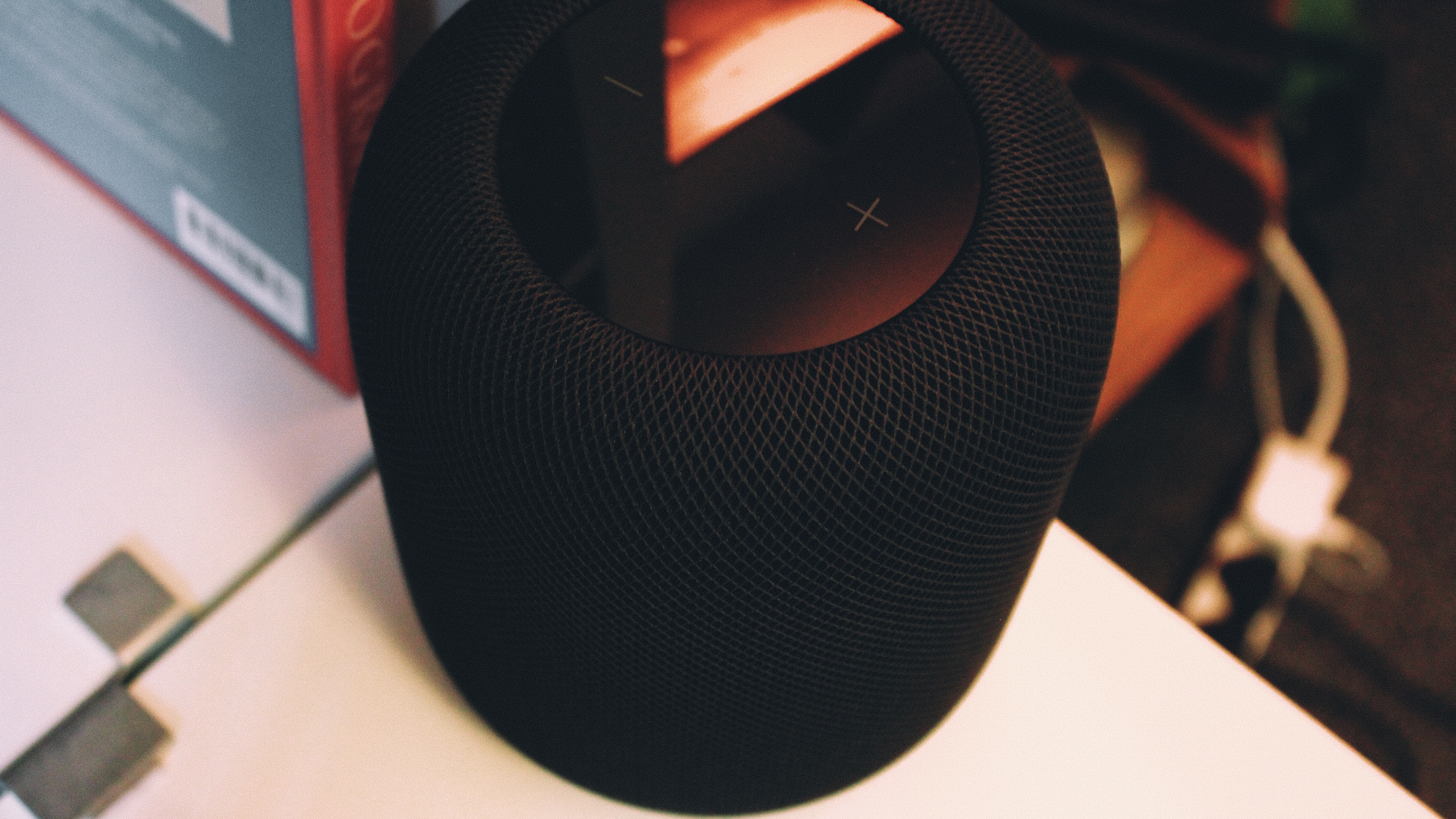
The biggest competition for the Sonos Era 300 is the HomePod 2. The Era 300, however, even though it's $150 more, offers a far, far more accomplished experience. There’s better sound quality on offer, more sound inputs on the back, Bluetooth connection, and a better-looking speaker. It’s bigger, yes, but that’s perhaps where some of that sonic proficiency comes from.
Beyond the Homepod, there are plenty of other options. There are smart speakers from the likes of Bose, Denon, and others – but those all look very similar. They often come in at lower prices, however. If you’re really into Amazon’s Alexa system, there’s the Echo Studio, which sounds good and costs less, but also doesn’t have a handy mic-off switch on the back.
Sonos Era 300: Verdict
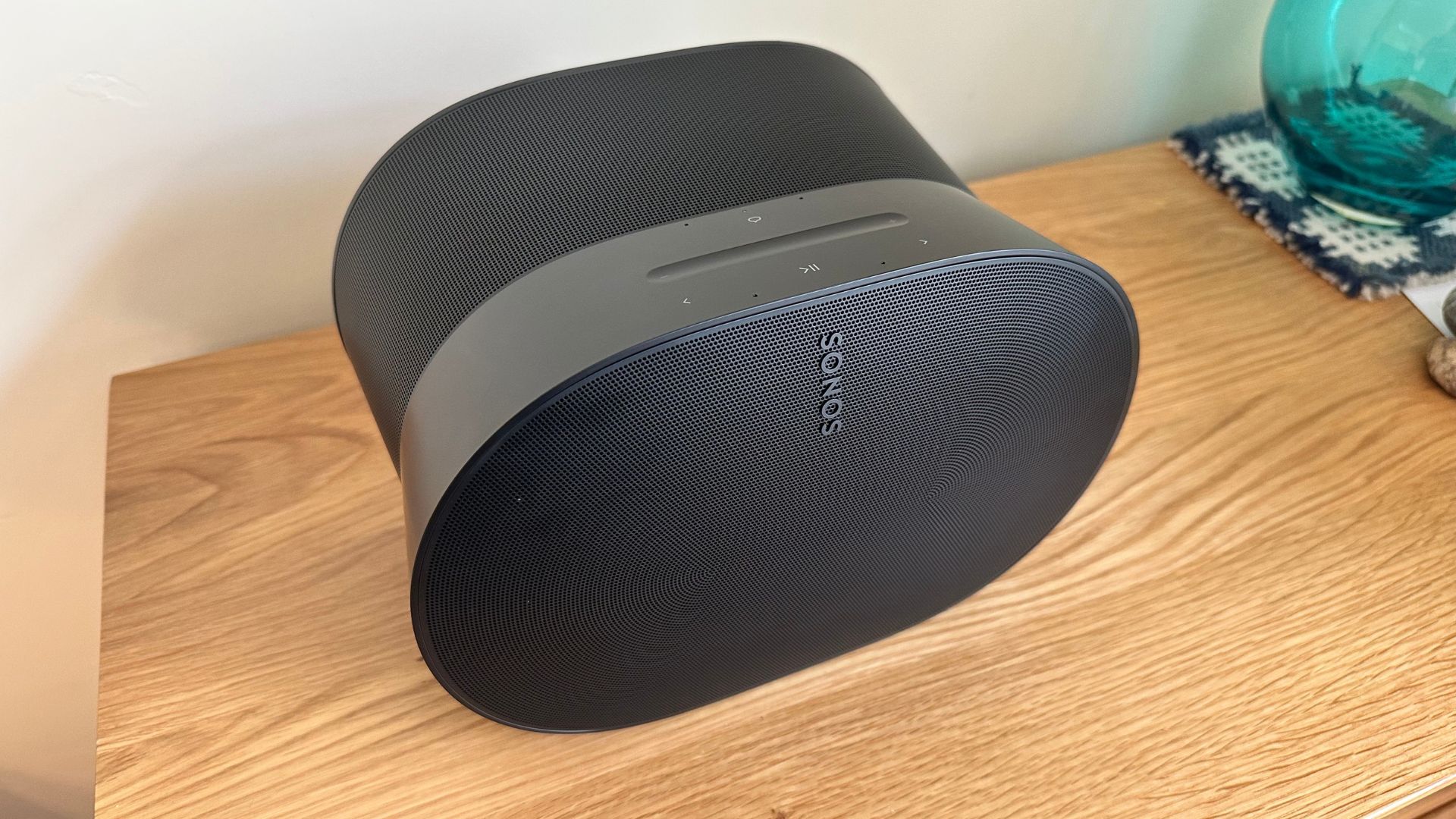
The Sonos Era 300 wows in so many ways. Its looks, its sound quality, its spatial audio performance, and its extra inputs all make it one of the best things I’ve tested so far this year. I love it for its strengths and forgive it for its small shortcomings because it sounds and looks so good.
Spend $450 and you’ll get the best smart speaker, blow by blow, for the money. The whole package.

The new standard
The Sonos Era 300 takes the rule book and crosses a few of them off. It’s not exactly the most revolutionary product out there, but it perfects the medium of the smart speaker, with some extra features and a stunning new design. It’s not cheap – but its the best Smart speaker for under $1000.

As iMore's Senior Staff writer, Tammy uses her background in audio and Masters in screenwriting to pen engaging product reviews and informative buying guides. The resident audiophile (or audio weirdo), she's got an eye for detail and a love of top-quality sound. Apple is her bread and butter, with attention on HomeKit and Apple iPhone and Mac hardware. You won't find her far away from a keyboard even outside of working at iMore – in her spare time, she spends her free time writing feature-length and TV screenplays. Also known to enjoy driving digital cars around virtual circuits, to varying degrees of success. Just don't ask her about AirPods Max - you probably won't like her answer.
